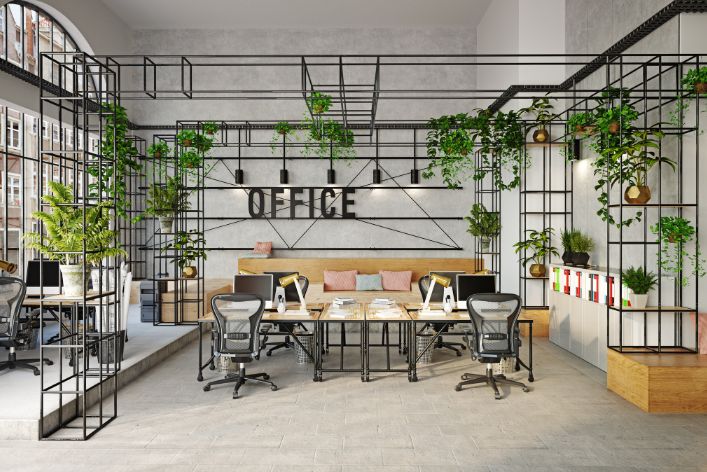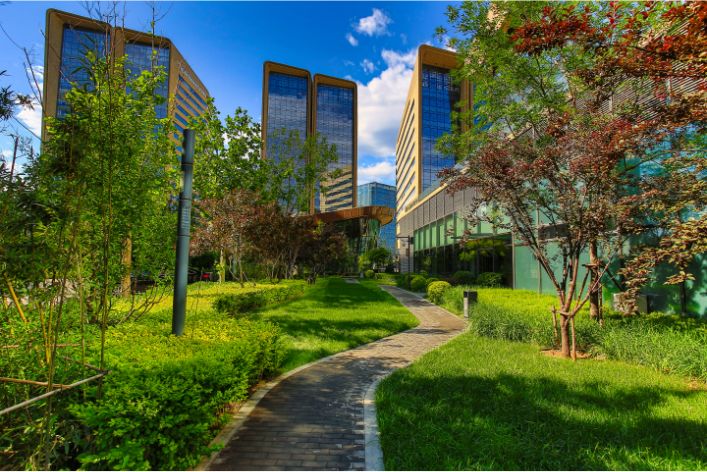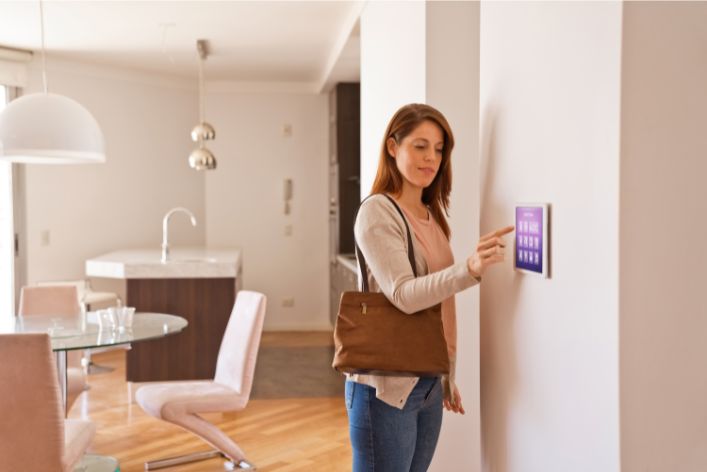Last Updated on May 15, 2023
Green spaces refer to natural or man-made areas that are predominantly covered in vegetation. They are often found within urban areas and serve as a place of relaxation and recreation for individuals. Green spaces are essential because they improve the quality of life in communities by mitigating the effects of pollution and increasing environmental sustainability.

Green spaces have numerous benefits, making them a vital part of any urban planning strategy. They regulate temperature by providing shade and reducing the urban heat island effect. Also, green spaces reduce the amount of pollutants in the air, soil, and water, thereby improving the quality of life for residents. They also increase biodiversity and provide a habitat for wildlife, promoting ecological sustainability.
The thesis statement for this blog post is that green spaces are essential for the well-being of urban communities. The post will explore the different types of green spaces, their benefits, and how they can be implemented in urban planning. It will also analyze the effects of green spaces on physical and mental health and outline how they can contribute to economic growth.
Green spaces play an important role in the urban environment, giving residents a place to relax and connect with nature. By incorporating green spaces into urban planning, we can improve the quality of life for residents, reduce pollution, and promote ecological sustainability. The subsequent chapters of this blog post will explore the different ways in which green spaces can benefit urban communities.
Read: Eco-Wonder Homes Soar: Exciting Green Real Estate Movement
Effects of Green Spaces on Physical Health
Green spaces have been known to have numerous positive effects on physical health. These effects are significant and cannot be ignored. In this blog chapter, we will discuss some of the most notable effects of green spaces on physical health.
Reduction of air pollution
Air pollution is a significant problem in many urban areas. Polluted air can cause various health issues, including respiratory problems, heart disease, and stroke. However, green spaces can help reduce air pollution. Plants absorb carbon dioxide and other pollutants, producing oxygen in the process. Trees and greenery can create a barrier between traffic and pedestrians, reducing the level of pollutants in the air.
Increased physical activity
Green spaces provide an ideal environment for physical activities, such as jogging, cycling, and walking. Physical activity is essential for good health. It helps maintain a healthy weight, improve cardiovascular health, and boost mental well-being. Green spaces provide ample space for physical activities, and studies have shown that people who live close to green spaces are more likely to engage in physical activities.
Boosted immune system
Spending time in green spaces has been shown to boost the immune system. Trees and plants produce chemicals known as phytoncides, which can increase the production of white blood cells, which helps to fight infections. In addition, exposure to sunlight enables the body to produce Vitamin D, which is essential for a healthy immune system.
Lowered risk of chronic diseases
Many chronic diseases, including cancer, diabetes, and heart disease, are linked to lifestyle factors such as poor diet and lack of physical activity. Green spaces provide an ideal environment for physical activities, as well as opportunities for people to connect with nature. Studies have shown that people who live close to green spaces have a lower risk of developing chronic diseases.
In conclusion, green spaces have numerous positive effects on physical health. They help reduce air pollution, provide an ideal environment for physical activities, boost the immune system, and lower the risk of chronic diseases. As more and more people move to urban areas, the importance of creating and maintaining green spaces cannot be overlooked.
Read: The Impact of Workplace Design on Employee Well-being
Effects of Green Spaces on Mental Health
It’s no surprise that spending time in nature has a positive impact on our mental health. Green spaces, such as parks and gardens, are beneficial for our well-being in a number of ways.
Stress reduction
The calming effect of green spaces can help reduce stress levels. Exposure to nature has been shown to lower cortisol levels, which is the hormone associated with stress. A walk through a park or spending time in a garden can provide a much-needed break from the fast pace of our daily lives.
Improved emotional well-being
Green spaces have been linked to improved emotional well-being, including less anxiety and depression. People who spend time in nature report feeling more positive and have a better overall mood. This effect is thought to be due to the natural beauty and peaceful environment of green spaces.
Boosted cognitive function
Research has shown that spending time in green spaces can improve cognitive function. Time spent in nature can increase our ability to focus, improve our short-term memory, and enhance our creativity. This effect is seen in both children and adults.
Better sleep quality
Exposure to nature can also improve our sleep quality. Studies have shown that people who live near green spaces or have access to them report better sleep patterns. A walk in the park or simply sitting outside can help regulate our sleep-wake cycle and improve the quality of our sleep.
Green spaces have a positive impact on our mental health. They offer a peaceful escape from the stresses of daily life and can improve our emotional well-being, cognitive function, and sleep quality. So next time you’re feeling overwhelmed or need a break, consider spending some time in nature.
Read: The Growing Market for Green Hotel Investments
Social Benefits of Green Spaces
Green spaces are more than just pretty areas filled with trees and grass. They have numerous social benefits that directly impact the quality of life of individuals and communities. Here are some of the social benefits of green spaces that you should know:
Increased social connections
Green spaces, such as parks and gardens, provide a conducive environment for people to interact, socialize, and connect with each other. These spaces create a sense of community and belonging, and people can easily establish new relationships with others who enjoy similar activities.
Additionally, green spaces often host community events such as cultural festivals, music concerts, and food fairs. These events attract people from different parts of the city, creating a platform for socializing and connecting with others. These connections can lead to increased social capital, which can be beneficial in a variety of ways.
Better community engagement
Green spaces also play a crucial role in community engagement. Local residents can get involved in the planning and management of these areas, giving them a sense of ownership and pride in their neighborhood. When community members are involved in the development and maintenance of green spaces, the result is a more vibrant, functional, and safe environment for all.
Community engagement also creates a strong sense of civic responsibility and instills a desire to look out for the common good. This, in turn, results in a greater willingness to participate in other community activities and initiatives, leading to a more tightly-knit and engaged community.
Enhanced sense of belonging
Green spaces often serve as a symbol of identity and community pride, especially in urban areas where greenery is scarce. These spaces can unite people from different social backgrounds while providing a sense of belonging and pride.
A sense of belonging is essential for healthy living and encourages people to care for their surroundings. This sense of ownership can lead to increased participation in civic activities, which helps to build stronger communities and provides a sense of purpose.
Better mental and physical health for children
Green spaces also provide numerous benefits to children, including improved mental and physical health. Studies have shown that children who have access to green spaces are generally healthier and happier than their peers who lack such access.
Green spaces provide children with opportunities to engage in physical activity and perform a variety of outdoor activities. Playing in green spaces can also have a positive impact on children’s mental health, helping to reduce stress, anxiety, and depression. Lastly, regular exposure to green spaces can help children develop stronger immune systems, reducing the likelihood of various diseases.
Green spaces provide a wide range of social benefits and play an essential role in promoting healthy communities and happier lives. From fostering social connections and community engagement to enhancing the sense of belonging and promoting better mental and physical health for children, the social benefits of green spaces cannot be overstated. Local communities and governments should prioritize the development and maintenance of green spaces to create a vibrant and healthy environment for all.
Read: The Impact of Environmental Sustainability on Business: How Going Green Can Increase Profits

Economic Benefits of Green Spaces
Green spaces are not only beneficial to the environment and to our health, but they can also provide numerous economic benefits to communities. In this article, we will explore some of the economic benefits of green spaces.
Increased property value
- Green spaces can increase the property values of nearby homes and businesses.
- Homes and businesses located near green spaces are typically sought after by buyers.
- Having a park or nature reserve nearby can provide residents with a sense of community and better quality of life.
Increased tourism
- Cities and towns with ample green spaces can attract tourists.
- Visitors are often attracted to parks, botanical gardens, and other natural attractions.
- Green spaces can also be used for recreational activities, such as hiking and camping, which can bring in revenue for local businesses.
Cost-Effectiveness of green infrastructure
- Green infrastructure, such as green roofs and rain gardens, can save communities money.
- Green roofs can reduce energy costs by insulating buildings and absorbing heat.
- Rain gardens can reduce stormwater runoff, which can save cities money on costly water treatment and infrastructure.
Better job opportunities
- Green spaces can provide job opportunities, such as park rangers and landscape architects.
- Green infrastructure projects can create jobs in installation and maintenance.
- Having a vibrant and well-maintained green space can attract businesses and create a more livable, attractive community, which can lead to more job opportunities.
As we can see from these examples, green spaces can have a significant impact on a community’s economic well-being. They can increase property value, attract tourism, save money through cost-effective infrastructure, and create job opportunities. Investing in green spaces is not only good for the environment and our health, but it can also be a smart economic decision.
Read: 9 Reasons Green Tea is Good For You
Obstacles in Creating and Maintaining Green Spaces
Green spaces provide numerous benefits for urban areas, including mitigating the urban heat island effect, improving air quality, enhancing the aesthetic value of an area, and promoting physical activity. However, creating and maintaining them can be challenging due to various obstacles, including:
Lack of public funding
The creation and maintenance of green spaces require financial resources, and many cities lack sufficient public funding to support these initiatives. This can result in neglected parks, inadequate facilities, and lower-quality amenities, which can discourage people from using them.
Inadequate maintenance
Maintenance is a critical aspect of green spaces, and a lack of regular maintenance can lead to overgrown vegetation, trash accumulation, and other safety hazards. Additionally, parks and other green spaces can be prone to vandalism, which can be difficult to prevent without adequate security measures.
Insufficient public engagement and community ownership
Community involvement and ownership are essential for the success of green spaces, but it can be challenging to engage the public effectively. Without effective engagement, members of the community may not feel invested in the spaces, which can lead to underutilization, negative perceptions, and lack of support.
Difficulty in finding appropriate location
Finding a suitable location for a green space can be challenging, particularly in urban areas where land is at a premium. Many cities face a shortage of large, undeveloped areas, leaving little room for new parks and green spaces. Low-income areas often lack green spaces, making residents more vulnerable to the negative effects of environmental degradation.
Green spaces are an important aspect of urban life, but creating and maintaining them can be challenging. We must surmount all hurdles to make green spaces accessible, well-kept, and integral to each city’s urban design.
Read: Impact Investing: Investing in Companies and Causes That Align with Your Values
Conclusion
Recap: Extensive research over the years has proven that green spaces offer numerous benefits to human well-being. These include reduced stress levels, improved mental health, increased physical activity, and better socialization.
Call to action: With the ever-increasing popularity of urban living, it is vital to create and maintain green spaces in cities. Local authorities, urban planners, and residents must collaborate to preserve and expand green spaces in their communities.
Final thoughts: Green spaces are essential to our physical and mental well-being. The benefits derived from these spaces make them an invaluable asset to our communities. Let us preserve, create, and expand green spaces for our overall health and happiness.
Before You Go…
Hey, thank you for reading this blog to the end. I hope it was helpful. Let me tell you a little bit about Nicholas Idoko Technologies. We help businesses and companies build an online presence by developing web, mobile, desktop, and blockchain applications.
We also help aspiring software developers and programmers learn the skills they need to have a successful career. Take your first step to becoming a programming boss by joining our Learn To Code academy today!
Be sure to contact us if you need more information or have any questions! We are readily available.










